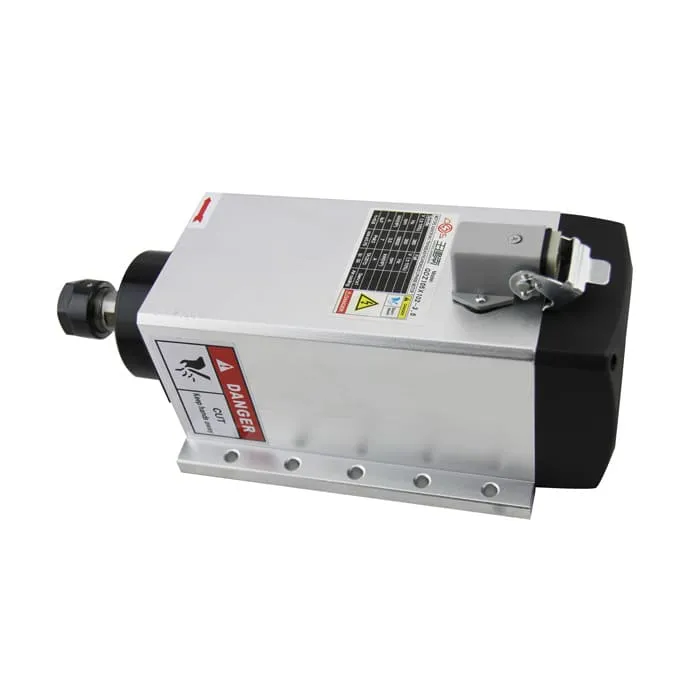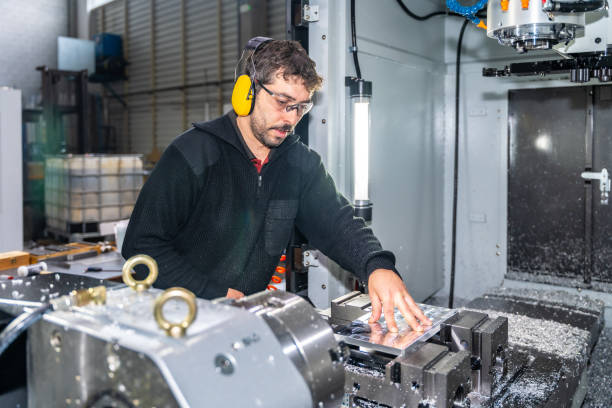How to Write a Post Processor for CNC
A post processor is the critical link between CAM software and CNC machines, translating toolpath data into machine-specific G-code. This comprehensive guide will walk you through the process of writing a post processor for CNC machines.
Understanding Post Processors
Post processors are essential software components that:
- Convert CAM output to machine-specific code
- Handle unique machine features
- Manage tool changes and parameters
- Format program structure

Modern equipment like the 2.2KW ER16 Air-Cooled Spindle requires precise post processing
Core Components
Essential elements include:
- Program header
- Machine initialization
- Tool change routines
- Movement commands
- Program closure
Basic Structure
A typical post processor includes:
// Program Header
%
O1001 (PROGRAM NAME)
G90 G54 G17
G21 (METRIC)
// Machine Setup
T1 M6
G43 H1
M3 S12000
M8
// Machining Operations
G0 X0 Y0 Z50
G1 Z-5 F1000
...
// Program End
M5
M9
G28 G91 Z0
M30
%Machine Configuration
Essential Parameters
- Controller type
- Axis configuration
- Tool change method
- Coolant options

Programming for the 3.5KW ER25 Air-Cooled Spindle requires specific post processor settings
Variable Handling
Common variables include:
| Variable Type | Example | Usage |
|---|---|---|
| Tool Data | #1 = [TOOL_NUMBER] | Tool selection |
| Coordinates | #2 = [X_POSITION] | Position data |
| Speeds | #3 = [SPINDLE_SPEED] | RPM settings |
| Feeds | #4 = [FEED_RATE] | Feed rates |
Custom Functions
Tool Change Example
def tool_change():
output_line("M5") // Stop spindle
output_line("G91 G28 Z0") // Return to home
output_line("T" + tool_number + " M6") // Change tool
output_line("G43 H" + tool_number) // Height offsetError Handling
Implement checks for:
- Axis limits
- Speed restrictions
- Tool compatibility
- Parameter validation

Complex machines like the 3.5KW ER20 Air-Cooled Spindles need robust post processors
Testing Procedures
Verification Steps
- Dry run simulation
- Single block execution
- Feed rate override
- Tool path verification
Advanced Features
Macro Programming
// Custom cycle definition
sub define_cycle
#100 = [DEPTH]
#101 = [STEP_DOWN]
#102 = [FEED_RATE]
while [#100 > 0] do
G1 Z-#101 F#102
G1 X#103 Y#104
endwhile
endsubOptimization Techniques
- Minimize redundant code
- Optimize rapid movements
- Reduce tool path complexity
- Streamline tool changes
Controller-Specific Requirements
Different controllers need:
- Unique formatting
- Specific G-codes
- Custom macros
- Special parameters
Documentation Standards
Include in documentation:
- Machine specifications
- Variable definitions
- Custom functions
- Usage examples
Debugging Methods
Common debugging approaches:
- Backplot verification
- Step-through execution
- Variable monitoring
- Output analysis
Performance Considerations
Optimize for:
- Processing speed
- Memory usage
- File size
- Execution efficiency
Safety Implementation
Include safety features:
- Limit checking
- Tool verification
- Coolant control
- Emergency stops
Version Control
Maintain:
- Change logs
- Version numbers
- Backup copies
- Update history
Testing Protocol
Develop testing for:
- Basic operations
- Complex features
- Error conditions
- Edge cases
FAQs
1. How long does it take to develop a custom post processor?
Development time varies from a few days for simple machines to several weeks for complex multi-axis systems, depending on requirements and features needed.
2. Can I modify an existing post processor instead of writing from scratch?
Yes, modifying an existing post processor is often more efficient. However, ensure you understand the original code and maintain proper documentation of changes.
3. What programming language should I use for post processor development?
The choice depends on your CAM system. Common languages include C++, Python, and proprietary languages specific to CAM software platforms.
4. How do I handle special machine features in a post processor?
Special features require custom functions and parameters. Start by documenting the feature requirements, then implement and test thoroughly.
5. What are common post processor debugging techniques?
Use simulation tools, dry runs, single block execution, and variable monitoring. Always test with simple programs before moving to complex operations.
Conclusion
Writing a CNC post processor requires careful planning, thorough understanding of both CAM software and machine requirements, and meticulous attention to detail. Success depends on:
- Comprehensive machine knowledge
- Strong programming skills
- Systematic testing approach
- Detailed documentation
Remember that a well-written post processor is crucial for efficient and accurate CNC operations. Take time to plan, implement, and test thoroughly. For specific questions about machine requirements or technical specifications, don’t hesitate to contact us for guidance.
Key takeaways:
- Start with clear requirements
- Use structured development approach
- Implement robust error handling
- Test thoroughly before deployment
- Maintain detailed documentation

